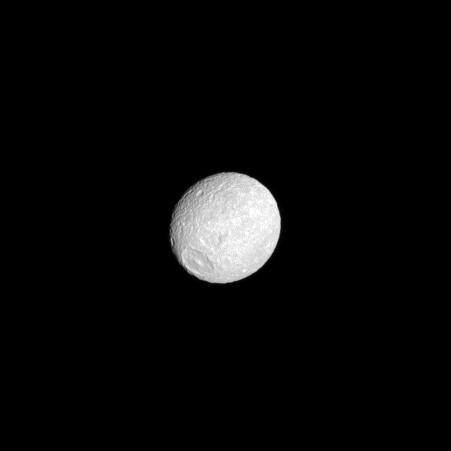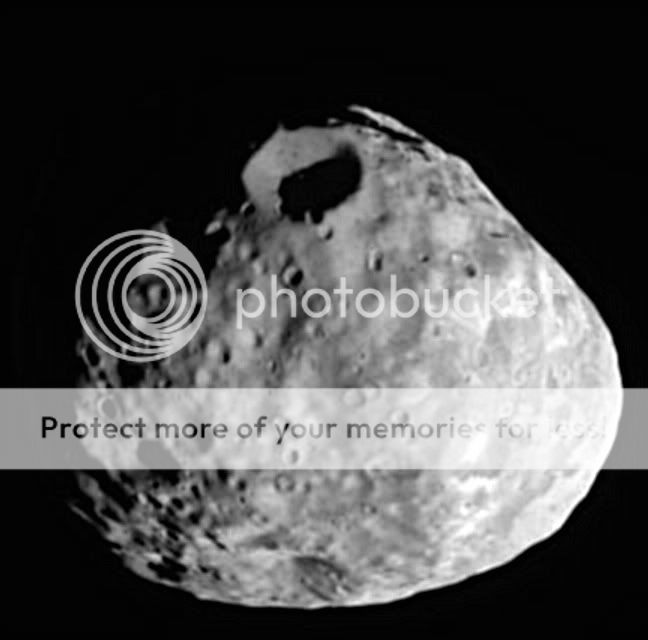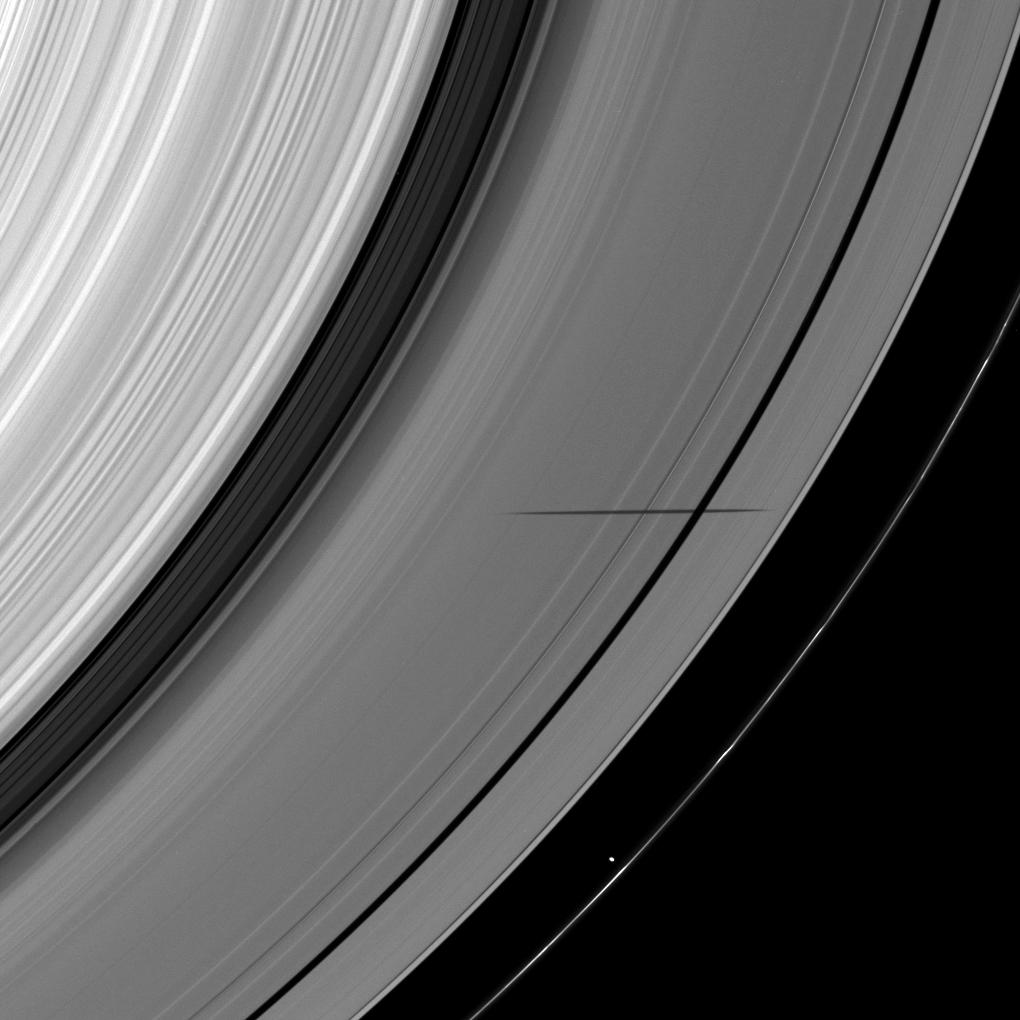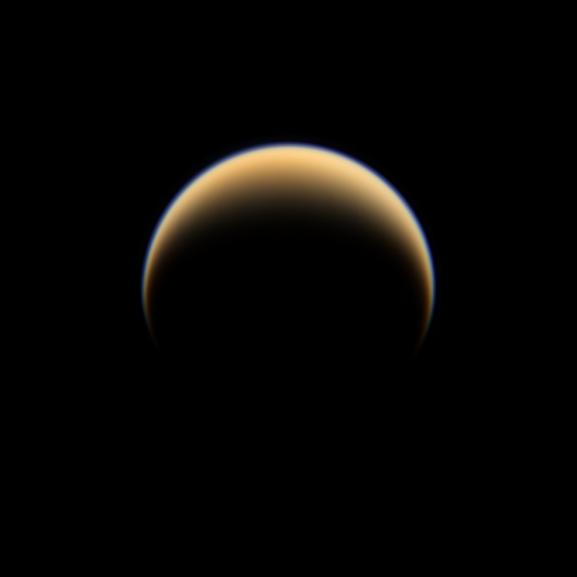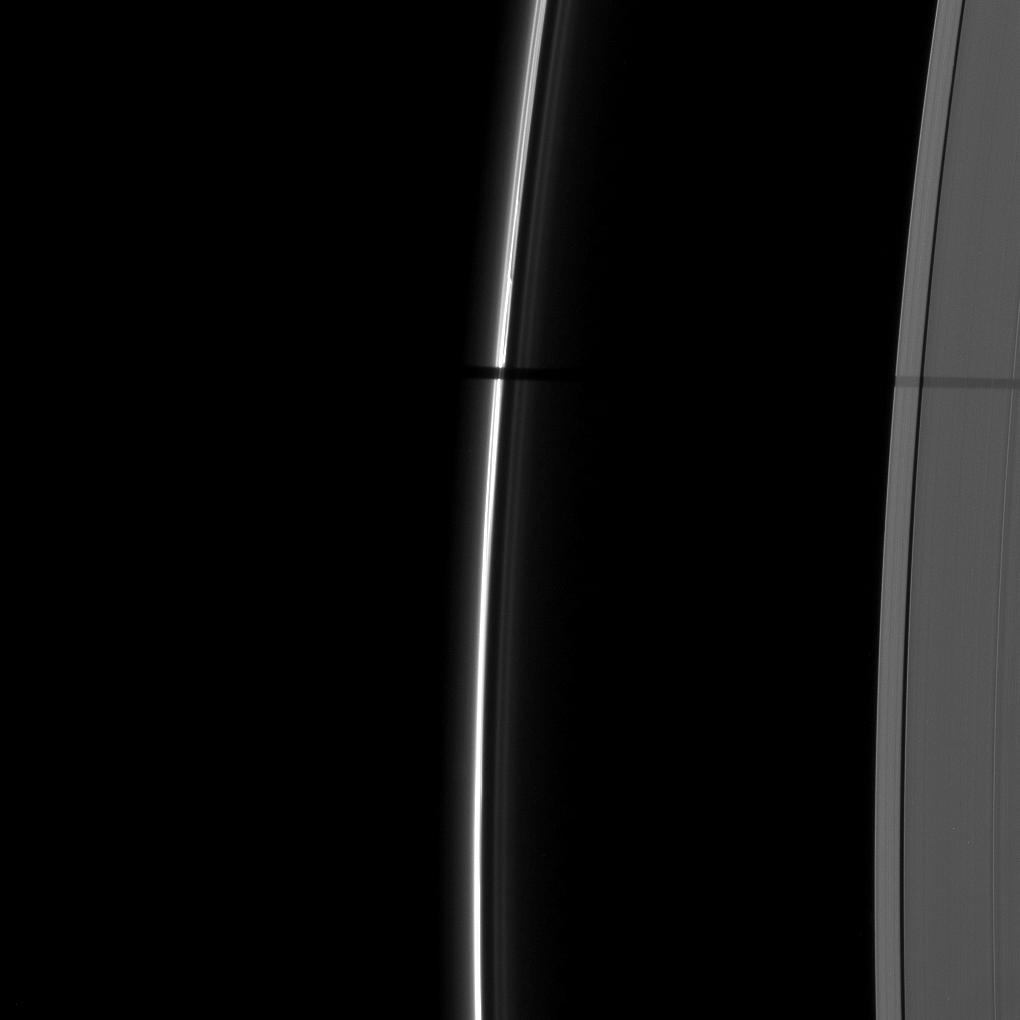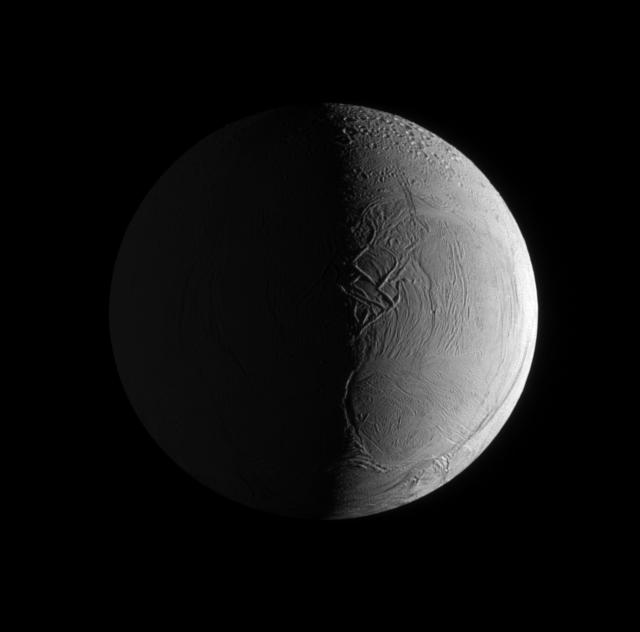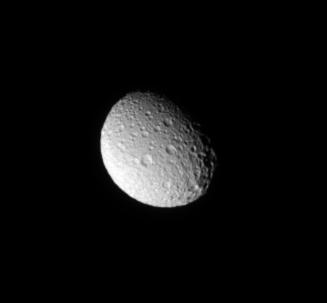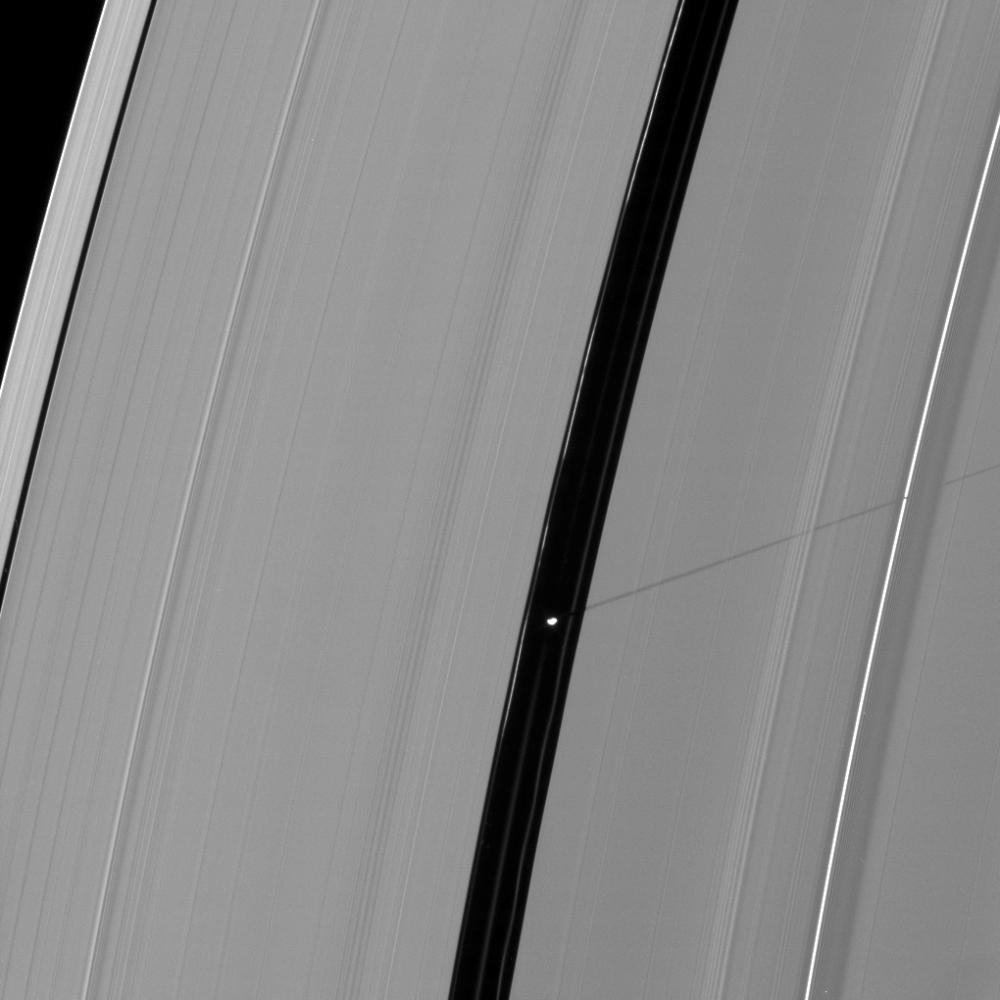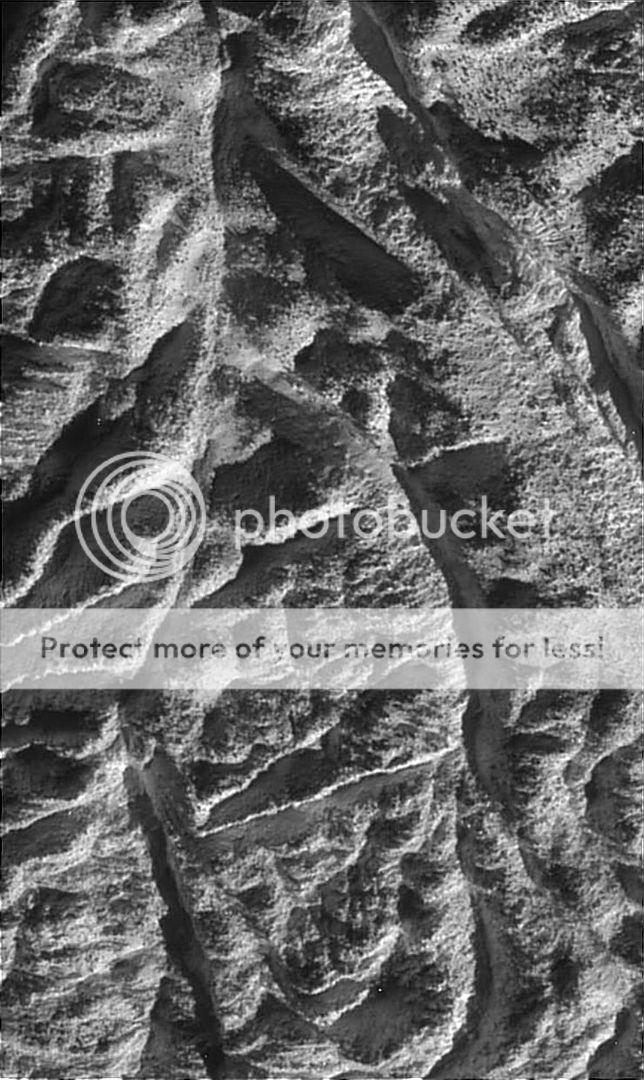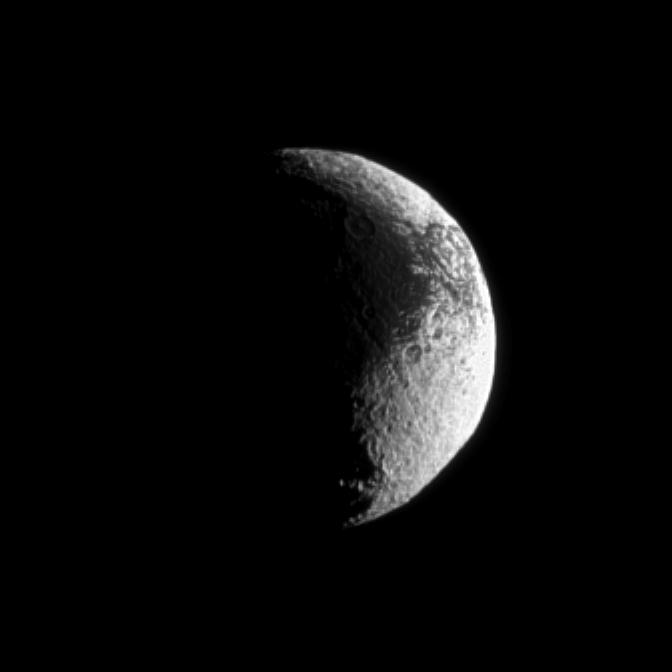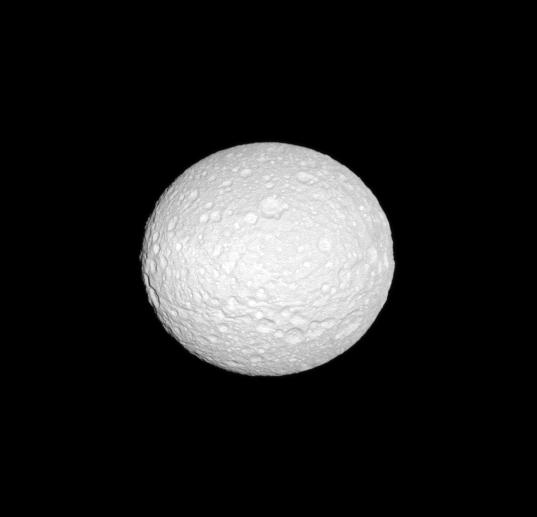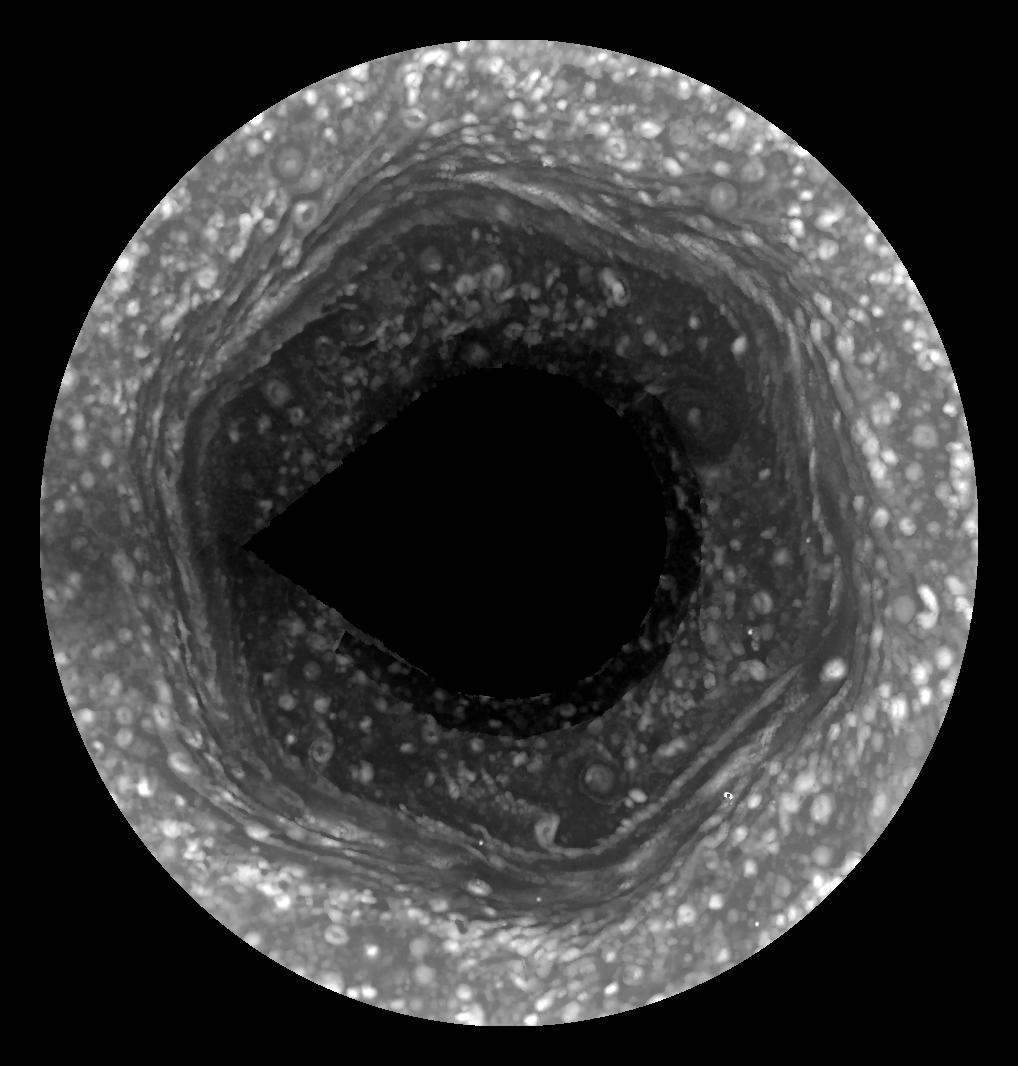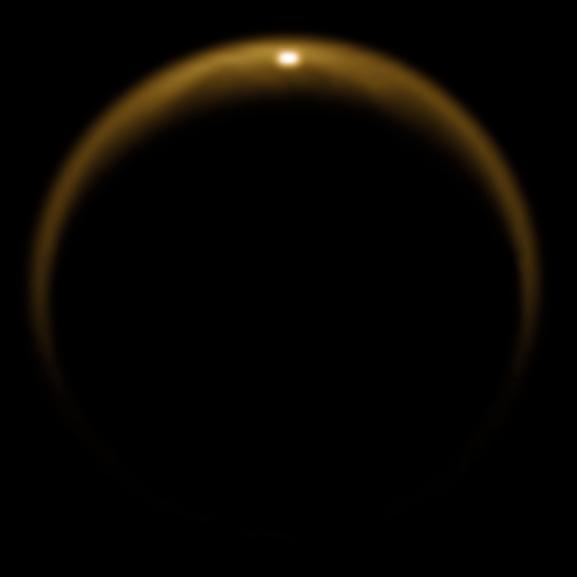Re: Cassini Equinox Mission (Cassini's two year extension).
IR view of a 6,993 KM wide area of lower clouds in Saturn's atmosphere. These clouds are below the high thin ones & hazes in Saturn's Stratosphere. Towards the bottom, IMH are what looks like massive thunderheads.
High latitudes of Dione are shown here. The image is centred at 66 North. Dione can be seen here to have undergone goelogical activity in the past, particularly the tectonic ridges & rifting. Whilst Dione is cratered, the cratering density is far lower than for many of the other of Saturn's moons such as Mimas, Tethys, Rhea & Iapetus.
Tracking reveals Dione to be differentiated, i.e has a least a distinct core & mantle layer below the icy crust & out of Saturn's moons only Titan & Enceladus apart from Dione display this.
Here the shadow of the 179 KM wide moon Janus cuts across the Encke Gap in Saturn's rings. This image was obtained on: Tuesday 9th June 2009, only 63 days prior to the Kronian Equinox.
Here the 86 KM wide asteroidal shaped ice moon Prometheus can be seen both causing a wake & is also casting a shaodw across the F Ring on: Tuesday 30th June 2009, only 42 days prior to the Kronian Equinox.
Andrew Brown.






